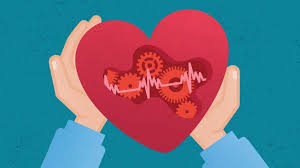India has seen a disturbing ascent in the event of non-transferable illnesses and the greater part of the weight is owing to cardiovascular sicknesses. As indicated by a report by the Lancet, the commonness of coronary illness and stroke has expanded by more than 50% in India over the most recent thirty years.
Stroke is an unmistakable reason for mortality because of neurological illnesses in India and was answerable for 7.4 percent of absolute passings.
As per the Indian Stroke Association (ISA), 17 million individuals experience a stroke every year, out of which 6 million bite the dust and 5,000,000 remain for all time impaired. Because of deficient preventive and stroke the executives offices, roughly eight percent passings happen because of stroke in center and low-pay nations like India.
A stroke happens when blood stream to the mind is upset — either because of a hindered whistle in the cerebrum (ischemic stroke) or vessel barging in the mind (hemorrhagic stroke). When a patient has experienced a stroke, all things considered, they experience repetitive strokes.
Accordingly comprehend the danger related with essential and intermittent strokes to have the option to limit them.
Symptoms:
BE-FAST
B – Balance
E – Eyes or trouble with vision
F – Face, does the persons face look uneven or drooping to one side?
A– Arm or Leg, does the patient have numbness or weakness in one arm or leg
S – Speech, does the patient have difficulty speaking?
T – Time to reach a stroke-ready hospital
A stroke-ready hospital is one that is equipped with facilities like a CT scanner (available 24×7) and other necessary processes to treat a stroke. Directly approaching a stroke-ready hospital makes it more likely that the patient is eligible for acute stroke therapies, which have a limited time-window.
Risk factors for stroke
Risk factors for getting a stroke can be divided into two parts — modifiable risk factors (those which we can take preventive measures against, like hypertension or high blood pressure, diabetes, dyslipidemia or high cholesterol, inactivity and obesity) and non-modifiable risk factors (advanced age, male gender and positive family history).
Another condition that can predispose an individual to stroke is something called atrial fibrillation. It is the irregular beating of the heart which can increase the chances of stroke by recurrent clot formation.
Although stroke is supposed to be a disease of the old, India, being the diabetic capital of the world, witnesses strokes occurring in a younger age group. Smoking, oral tobacco, hukka, unhealthy lifestyle and dietary patterns lead to a higher risk of stroke.
Hypertension is the single most treatable risk factor for both ischemic stroke and hypertensive bleed. Diabetes is thw the second most important risk factor for causing an ischemic stroke.
Stroke treatment
The right treatment depends on the kind of stroke you are having.
A CT scan is required to differentiate between ischemic stroke and bleeding in the brain. Other tests may be required to look at blood vessels and the heart.
People who have an ischemic stroke or stroke due to clogged arteries can be eligible for certain clot-buster medications. In addition to this, in some special cases, the clogged arteries can be reopened within a limited time window.
People who have strokes caused by bleeding need proper management to reduce pressure on the brain, control blood pressure, and in some cases, surgery may be required.
Stroke units
Dedicated units with nurses and doctors trained to treat stroke patients go a long way in preventing disability due to strokes. These units help in the prevention of complications related to a stroke – like bedsores, clots in the leg, and pneumonia. They also help expedite mobility through rehabilitative therapies like physiotherapy and speech therapy. More and more stroke units are required to prevent disabilities related to stroke.
How to prevent strokes?
Strokes can be prevented by regular intake of your prescribed medication which may include blood pressure medication, medicines to lower cholesterol called statins and drugs that prevent blood clots, like aspirin and other blood thinners. Medication which helps to maintain blood sugar levels (closest to normal) is also very helpful in the prevention of stroke.
lifestyle changes like exercise, smoking discontinuance and an eating routine that is wealthy in organic products, vegetables and low-fat dairy items likewise go far in the anticipation of strokes.
Eliminating one’s salt admission according to the proposal of a specialist to five gram each day or one teaspoon daily, helps in stroke anticipation. Development or action in any event, for spans as short as one-two minutes after each one hour of inertia is useful.
Weight reduction, in case you are overweight and restricting the measure of liquor as far as possible is helpful. Stopping tobacco in all structures whether oral tobacco, cigarette and bidi is helpful.
Dr Neetu Ramrakhiani is director of neurology at Fortis Escorts Hospital, Jaipur. Stroke is a special area of interest for her and she is currently involved in developing stroke unit at Fortis Escorts Hospital, Jaipur. She has authored an editorial in Neurology India and is principal investigator in a pilot project under Fortis Stroke Registry.

























